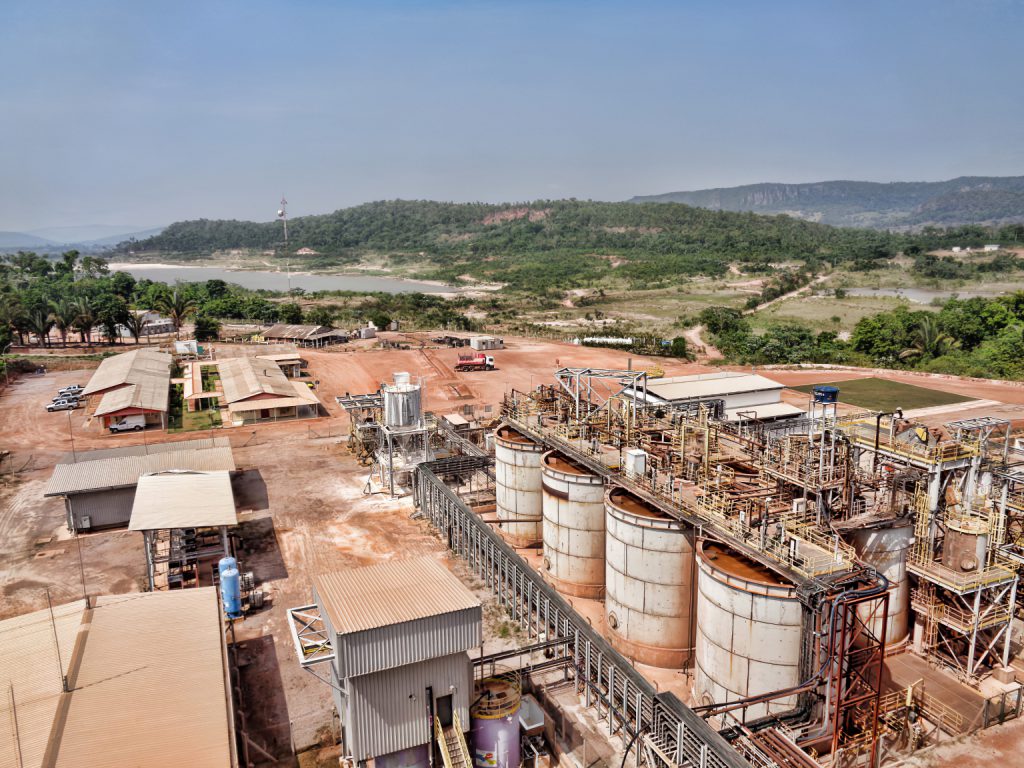Aura Minerals completes Borborema feasibility study, Brazil

Aura Minerals Inc. [ORA-TSX; ORAAF-OTC] reported results of the feasibility study for the Borborema project located in Rio Grande do Norte, Brazil. Borborema will be an open-pit gold mine with anticipated production of 748,000 ounces (oz) of gold over an initial 11.3-year mine life, with additional production upside. The technical report titled “Feasibility Study for the Borborema Project, Currais Novos Municipality, Rio Grande do Norte, Brazil,” prepared by Aura will be filed by Aura on SEDAR+ and CVM within 45 days of this press release.
Following the completion of this positive feasibility study, Aura anticipates the commencement of full construction with an estimated construction budget of US$188-million. Additionally, the company is reporting that Dundee Resources Ltd., a wholly owned subsidiary of Dundee Corp., has elected to convert its 20% equity interest in Borborema Inc. into a net smelter royalty (the royalty) of 1.50% on the first 1.5 million oz of gold sold, and 1.00% on the next 500,000 oz gold. Once the production threshold of two million oz of gold has been reached, the royalty will be terminated. Aura is now the sole shareholder of Borborema, controlling 100% of its shares.
Highlights of the feasibility study and the project: Robust project economics: Net present value (NPV) of US$182-million and after-tax IRR (internal rate of return) of 21.9% when using the weighted average consensus gold prices for the projected period of US$1,712/oz. At a US$1,900/oz gold price and considering US$100-million debt, the IRR is 51.9% and NPV of US$262-million.
Competitive costs: Life of mine (LOM) all-in-sustaining costs (AISC) on average of $949 oz, including the royalty paid to Dundee; if excluded, the AISC would be $923 oz, making it a solid first quartile project among the industry AISC curve. In the first three years of complete production, average AISC is $875/oz, including the new Dundee Royalties. Excluding such royalties, the average AISC would be $831/oz for such period.
Capital expenditure: Total investment of approximately US$188-million with payback in 3.2 years.
Initial operating life of 11.3 years: Weighted average annual gold production is estimated at 65,000 oz, with an estimated LOM of 11.3 years, based on mineral reserves estimated in accordance with NI 43-101 Standards. In the first three years of production, weighted average annual production is 83,000 oz.
Strong reserve base: The feasibility study includes updated mineral resource and reserve estimates under CIM and National Instrument 43-101 guidelines for the comprising probable reserves of 812,000 oz gold.
Substantial resource profile with upside for future conversion: Borborema’s mineral resources consists of 2,077,000 oz of indicated and 393,000 oz of inferred. Initial measures have already been undertaken to start obtaining the permits to move the road, and upon its successful relocation, Borborema has potential to convert in mineral reserves 1,265,000 oz of indicated mineral resources (exclusive of the current mineral reserves), depending on future set of modifying factors, such as gold price, exchange rate and others.
Exploration potential remains: The orebody of the Borborema deposit remains open along strike and down dip. Aura believes the project will benefit from additional drilling both to extend the mineral resource’s footprint and also to add more contained ounces within the current envelope of mineralization.
Rodrigo Barbosa, president and CEO, commented: “Borborema is expected to contribute significantly to our overall production profile, and we are delighted to announce this highly accretive feasibility study. Our optimism extends beyond the current findings, as a potential additional of 1.265 million ounces are expected to be converted to reserves following the completion of a 5.3 km road relocation besides new resources that should be added in the future once orebody remains opened along strike and down dip. Furthermore, Borborema is poised to set new benchmarks with its important contributions to ESG standards by using treated greywater from the local community, utilizing renewable energy sources and relying on a robust local labor force.”
Barbosa continued: “We are grateful for Dundee’s technical insights in getting us to this stage. Both of our teams worked hard together and both companies will benefit as we advance this project to construction and production by early 2025.”
